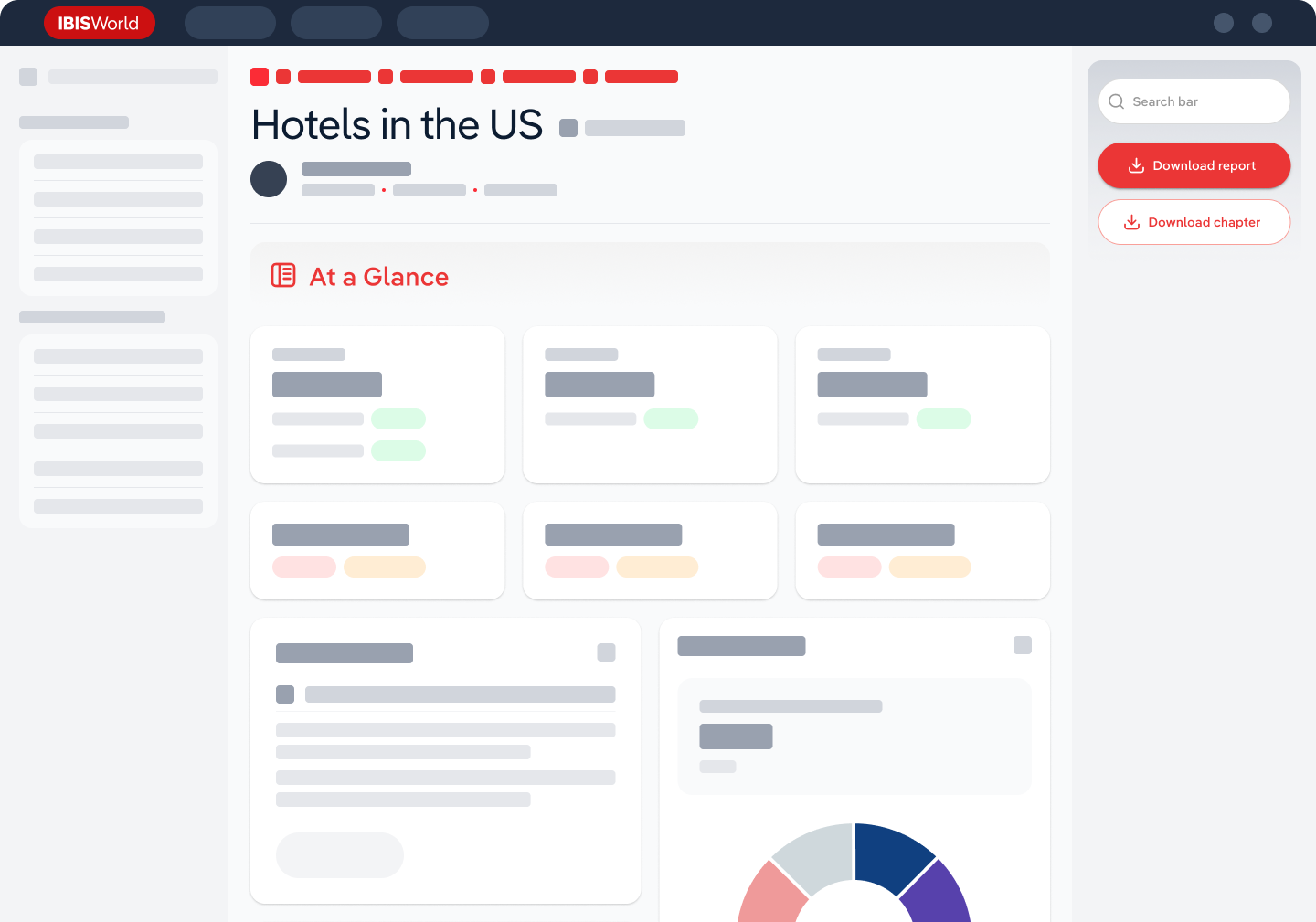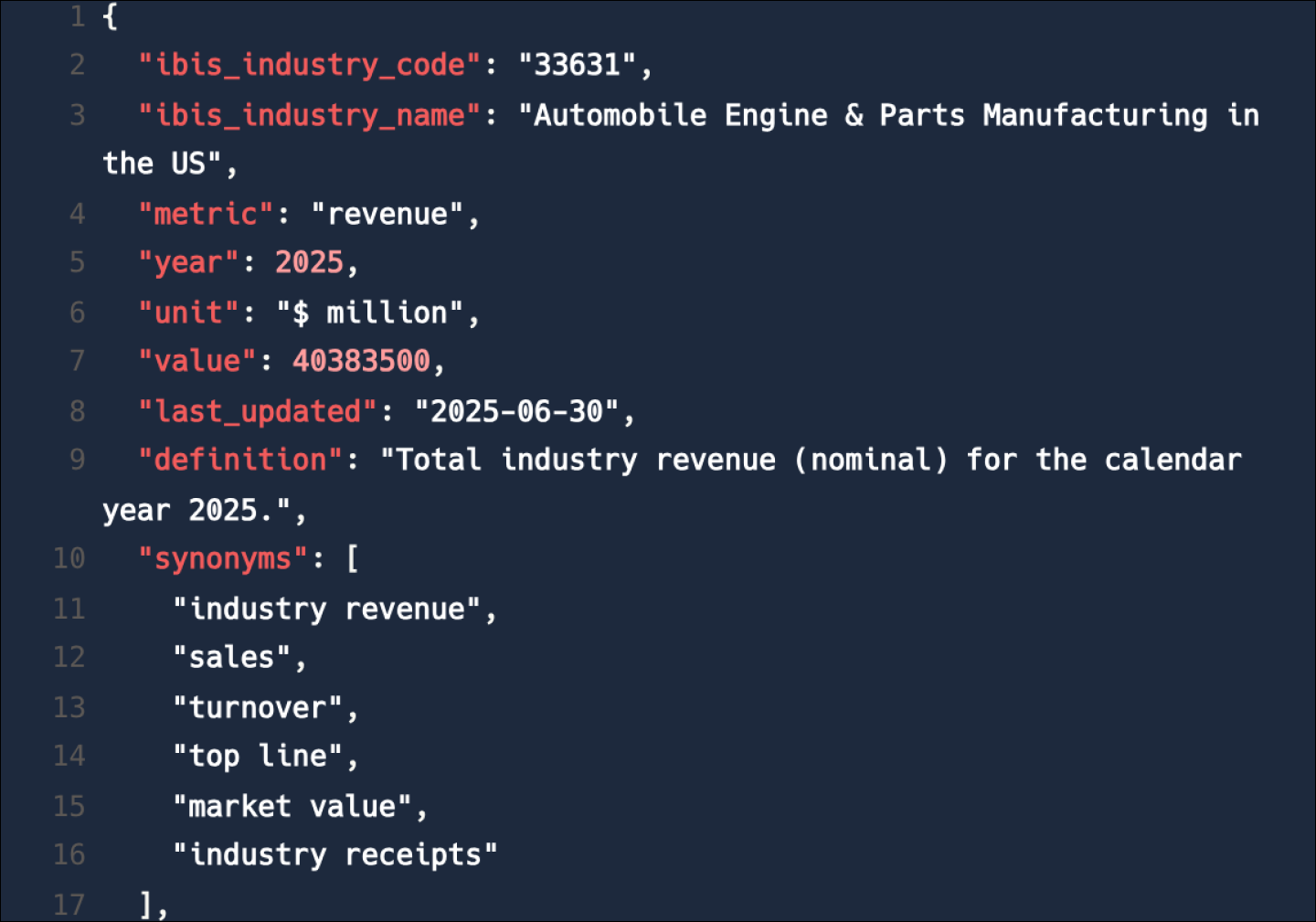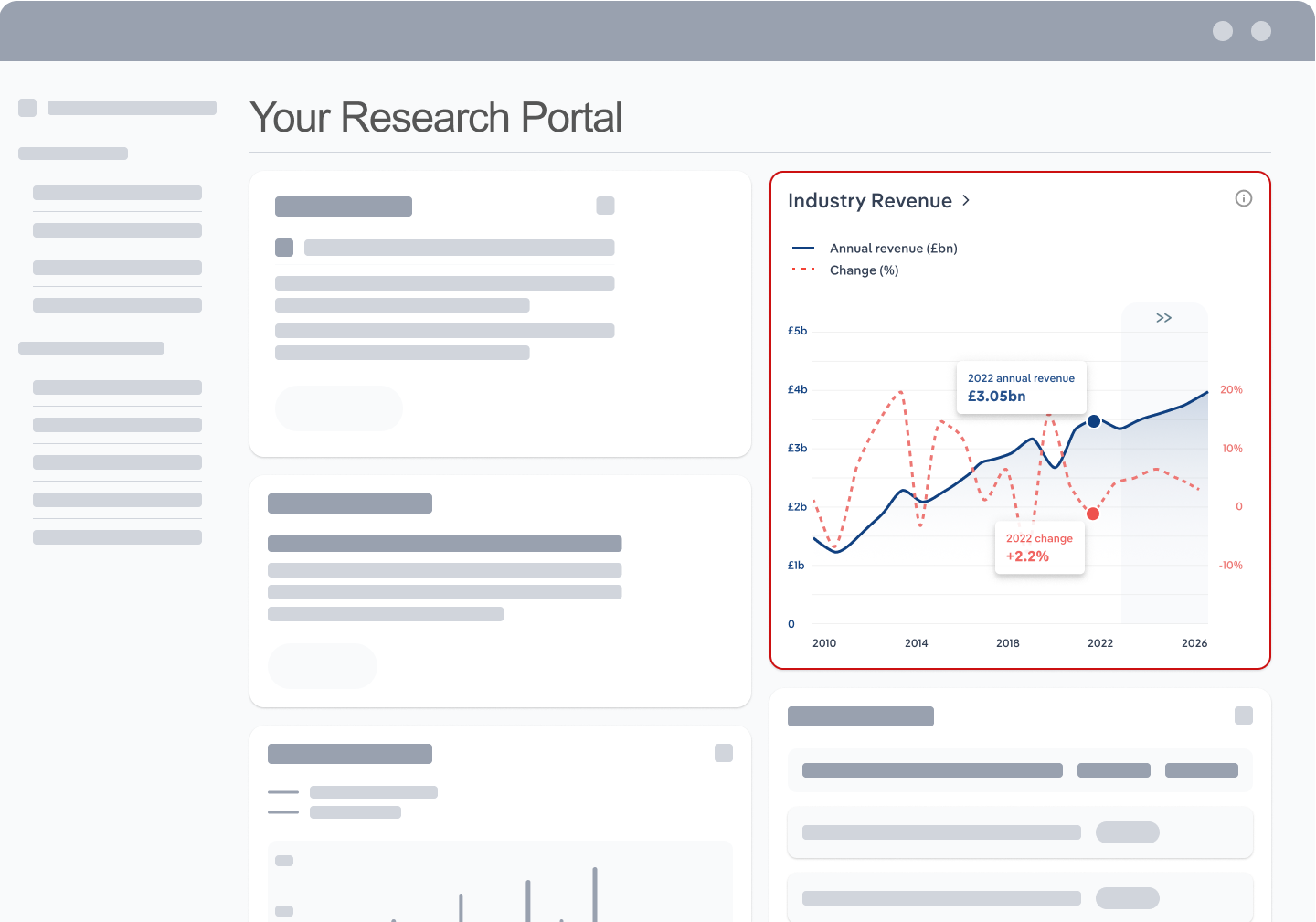Industry Statistics and Trends
Market size and recent performance (2015-2030)
Industry revenue has grown at a CAGR of 9.5 % over the past five years, to reach an estimated £5.7bn in 2025.
Trends and Insights
Salons aren’t backing down in the fight against DIY alternatives
- The rise of DIY make-up and hairstyling, fuelled by YouTube, TikTok and Instagram, threatens to usurp salons’ dominant position at the heart Briton’s beauty routines. Online platforms provide free, accessible tutorials, giving people the opportunity to learn professional techniques themselves. Influencers and beauty enthusiasts share step-by-step guides on everything from haircuts to advanced make-up looks, reducing the need for professional services.
- Additional trends and insights available with purchase
Industry outlook (2025-2030)
Market size is projected to grow over the next five years.
Trends and Insights
Salons lean on tech to sharpen their edge
- Large salons and independent companies alike are starting to leverage the latest advancements in technology to bolster their services. Salons are always on the lookout to upgrade their offerings to keep customers interested, especially as persistent economic uncertainty and social media trends drive a shift toward DIY solutions, threatening bookings. Advanced booking systems have become the latest flavour of the month for hairdressers and beauticians, with platforms like Fresha and Calendly booming in popularity as businesses seek ways to boost efficiency and reduce no-shows. With profit under strain from stubborn inflation and labour shortages, more salons may turn to these services, granting them vital breathing room as they seek ways to keep costs down.
Biggest companies in the Hairdressing & Beauty Treatment in the UK
| Company | Market Share (%)
2026 | Revenue (£m)
2026 |
|---|---|---|
Hersheson Products Ltd | 8.1 | |
Mascolo Ltd | 6.1 | |
Larry King Ltd | 6.0 |
To view the market share and analysis for all 3 top companies in this industry, view purchase options.
Products & Services Segmentation
Industry revenue is measured across several distinct product and services lines, including Hair cutting, styling and colouring, Skincare services and Hair removal services. Hair cutting, styling and colouring is the largest segment of the Hairdressing & Beauty Treatment in the UK.
Trends and Insights
DIY trends cut into styling, but growing male interest supports revenue from haircuts
- The hair-cutting, styling and colouring segment covers cuts, blow-dries and colour services for men, women and children. Styling also covers hair-smoothing treatments like ionic and chemical straightening.
- More insights available in the full report
Table of Contents
About this industry
Industry definition
This industry provides hairdressing and beauty services through hair and beauty salons and self-employed hair professionals and beauticians. Hairdressing services include hair washing, trimming and cutting, setting, dyeing, tinting, blow drying, straightening and similar activities. Beauty services include make-up, skincare, waxing, facial massages, eyebrow and eyelash tinting, manicures and pedicures. This industry also covers shaving and beard trimming services.
What's included in this industry?
Products and services covered in the Hairdressing & Beauty Treatment industry in the United Kingdom include Hair cutting, styling and colouring, Nail-care services, Tanning and spray tan services, Skincare services, Hair removal services, Product sales and Other hair services.Companies
Companies covered in the Hairdressing & Beauty Treatment industry in the United Kingdom include Hersheson Products Ltd, Mascolo Ltd and Larry King Ltd.Purchase this report to view all 3 major companies in this industry.
Related Terms
Related terms covered in the Hairdressing & Beauty Treatment industry in the United Kingdom include manicure, pedicure and facial.Industry Code
SIC 96.02 - Hairdressing & Beauty Treatment in the UK
Performance
Get an indication of the industry's health through historical, current and forward-looking trends in the performance indicators that make or break businesses.
Analyst insights
Rising image-consciousness ramps up beauty spend. Despite cost-of-living pressures, with six in 10 adults cutting back on the non-essentials in 2024, salon demand has proved ...
In this chapter (4)
- Current Performance
- Outlook
- Volatility
- Life Cycle
Key metrics
- Annual Revenue, Recent Growth, Forecast, Revenue Volatility
- Number of Employees, Recent Growth, Forecast, Employees per Business, Revenue per Employee
- Number of Businesses, Recent Growth, Forecast, Employees per Business, Revenue per Business
- Total Profit, Profit Margin, Profit per Business
Charts
- Revenue, including historical (2015-2024) and forecast (2025-2030)
- Employees, including historical (2015-2024) and forecast (2025-2030)
- Businesses, including historical (2015-2024) and forecast (2025-2030)
- Profit, including historical (2015-2025)
- Industry Volatility vs. Revenue Growth
- Industry Life Cycle
Detailed analysis
- Trends in supply, demand and current events that are driving current industry performance
- Expected trends, economic factors and ongoing events that drive the industry's outlook
- Key success factors for businesses to overcome volatility
- How contribution to GDP, industry saturation, innovation, consolidation, and technology and systems influence the industry's life cycle phase.
Products and Markets
Learn about an industry's products and services, markets and trends in international trade.
Analyst insight
Male grooming boosts demand for hair-styling services. Increasingly image-conscious men are investing in regular barbershop visits, driving up revenue from hair styling.
In this chapter
- Products & Services
- Major Markets
Key metrics
- Largest market segment and value in 2025
- Product innovation level
Charts
- Products & services segmentation in 2025
- Major market segmentation in 2025
Detailed analysis
- Trends impacting the recent performance of the industry's various segments
- Innovations in the industry's product or service offering, specialization or delivery method
- Key factors that successful businesses consider in their offerings
- Buying segments and key trends influencing demand for industry products and services
Geographic Breakdown
Discover where business activity is most concentrated in an industry and the factors driving these trends to find opportunities and conduct regional benchmarking.
Analyst insights
London reigns as the UK's hair and beauty hub. The city's high average income and status as the UK’s fashion centre make it a prime market for luxury hair and beauty services...
In this chapter (1)
- Business Locations
Charts
- Share of revenue, establishment, wages and employment in each region
- Share of population compared to establishments in each region in 2025
Tables
- Number and share of establishments in each region in 2025
- Number and share of revenue each region accounts for in 2025
- Number and share of wages each region accounts for in 2025
- Number and share of employees in each region in 2025
Detailed analysis
- Geographic spread of the industry across Europe, and trends associated with changes in the business landscape
- Key success factors for businesses to use location to their advantage
Competitive Forces
Get data and insights on what's driving competition in an industry and the challenges industry operators and new entrants may face, with analysis built around Porter's Five Forces framework.
Analyst insights
Skill is a key driver of competition. Hairdressers and beauticians attract clients by continually enhancing their expertise, using high-quality products and providing unique ...
In this chapter (4)
- Concentration
- Barriers to Entry
- Substitutes
- Buyer & Supplier Analysis
Key metrics
- Industry concentration level
- Industry competition level and trend
- Barriers to entry level and trend
- Substitutes level and trend
- Buyer power level and trend
- Supplier power level and trend
Charts
- Market share concentration among the top 4 suppliers from 2020-2025
- Supply chain including upstream supplying industries and downstream buying industries, flow chart
Detailed analysis
- Factors impacting the industry’s level of concentration, such as business distribution, new entrants, or merger and acquisition activity.
- Key success factors for businesses to manage the competitive environment of the industry.
- Challenges that potential industry entrants face such as legal, start-up costs, differentiation, labor/capital intensity and capital expenses.
- Key success factors for potential entrants to overcome barriers to entry.
- Competitive threats from potential substitutes for the industry’s own products and services.
- Key success factors for how successful businesses can compete with substitutes.
- Advantages that buyers have to keep favorable purchasing conditions.
- Advantages that suppliers have to maintain favorable selling conditions.
- Key success factors for how businesses can navigate buyer and supplier power.
Companies
Learn about the performance of the top companies in the industry.
Analyst insights
There are no major players in the industry. Though there’s a handful of large, well-known brands operating in the market, the industry is mostly made up of small, independent...
In this chapter
- Market Share Concentration
- Companies
- Company Spotlights
Charts
- Industry market share by company in 2021 through 2025
- Major companies in the industry, including market share, revenue, profit and profit margin in 2025
- Overview of Hersheson Products Ltd's performance by revenue, market share and profit margin from 2019 through 2025
- Overview of Mascolo Ltd's performance by revenue, market share and profit margin from 2019 through 2025
- Overview of Larry King Ltd's performance by revenue, market share and profit margin from 2019 through 2025
Detailed analysis
- Description and key data for Hersheson Products Ltd, and factors influencing its performance in the industry
- Description and key data for Mascolo Ltd, and factors influencing its performance in the industry
- Description and key data for Larry King Ltd, and factors influencing its performance in the industry
External Environment
Understand the demographic, economic and regulatory factors that shape how businesses in an industry perform.
Analyst insights
The Hairdressers (Registration) Act 1964 upholds standards. Registration is voluntary, but only people officially on the register can call themselves a “hairdresser”.
In this chapter
- External Drivers
- Regulation & Policy
- Assistance
Key metrics
- Regulation & policy level and trend
- Assistance level and trend
Charts
- Regulation & Policy historical data and forecast (2015-2030)
- Assistance historical data and forecast (2015-2030)
Detailed analysis
- Demographic and macroeconomic factors influencing the industry, including Regulation & Policy and Assistance
- Major types of regulations, regulatory bodies, industry standards or specific regulations impacting requirements for industry operators
- Key governmental and non-governmental groups or policies that may provide some relief for industry operators.
Financial Benchmarks
View average costs for industry operators and compare financial data against an industry's financial benchmarks over time.
Analyst insights
Wage hikes hit the industry hard. Given the industry’s labour-intensive nature, hair and beauty treatment salons have faced rising wage costs amid inflationary pressures and ...
In this chapter
- Cost Structure
- Financial Ratios
- Key Ratios
Key metrics
- Profit margin, and how it compares to the sector-wide margin
- Average wages, and how it compares to the sector-wide average wage
- Largest cost component as a percentage of revenue
- Industry average ratios for days' receivables, industry coverage and debt-to-net-worth ratio
Charts
- Average industry operating costs as a share of revenue, including purchases, wages, depreciation, utilities, rent, other costs and profit in 2025
- Average sector operating costs as a share of revenue, including purchases, wages, depreciation, utilities, rent, other costs and profit in 2025
- Investment vs. share of economy
Data tables
- Liquidity Ratios (2019-2023)
- Coverage Ratios (2019-2023)
- Leverage Ratios (2019-2023)
- Operating Ratios (2019-2023)
- Assets (2019-2023)
- Liabilities (2019-2023)
- Cash Flow & Debt Service Ratios (2015-2030)
- Revenue per Employee (2015-2030)
- Revenue per Enterprise (2015-2030)
- Employees per Establishment (2015-2030)
- Employees per Enterprise (2015-2030)
- Average Wage (2015-2030)
- Wages/Revenue (2015-2030)
- Establishments per Enterprise (2015-2030)
- IVA/Revenue (2015-2030)
- Imports/Demand (2015-2030)
- Exports/Revenue (2015-2030)
Detailed analysis
- Trends in the cost component for industry operators and their impact on industry costs and profitability
Key Statistics
Industry Data
Data Tables
Including values and annual change:
- Revenue (2015-2030)
- IVA (2015-2030)
- Establishments (2015-2030)
- Enterprises (2015-2030)
- Employment (2015-2030)
- Exports (2015-2030)
- Imports (2015-2030)
- Wages (2015-2030)
Top Questions Answered
Unlock comprehensive answers and precise data upon purchase. View purchase options.
What is the market size of the Hairdressing & Beauty Treatment industry in the United Kingdom in 2025?
The market size of the Hairdressing & Beauty Treatment industry in the United Kingdom is £5.7bn in 2025.
How many businesses are there in the Hairdressing & Beauty Treatment industry in the United Kingdom in 2025?
There are 51,821 businesses in the Hairdressing & Beauty Treatment industry in the United Kingdom, which has grown at a CAGR of 3.1 % between 2020 and 2025.
How may import tariffs affect the Hairdressing & Beauty Treatment industry in the United Kingdom?
The Hairdressing & Beauty Treatment industry in the United Kingdom is unlikely to be materially impacted by import tariffs with imports accounting for a low share of industry revenue.
How may export tariffs affect the Hairdressing & Beauty Treatment industry in the United Kingdom?
The Hairdressing & Beauty Treatment industry in the United Kingdom is unlikely to be materially impacted by export tariffs with exports accounting for a low share of industry revenue.
Has the Hairdressing & Beauty Treatment industry in the United Kingdom grown or declined over the past 5 years?
The market size of the Hairdressing & Beauty Treatment industry in the United Kingdom has been growing at a CAGR of 9.5 % between 2020 and 2025.
What is the forecast growth of the Hairdressing & Beauty Treatment industry in the United Kingdom over the next 5 years?
Over the next five years, the Hairdressing & Beauty Treatment industry in the United Kingdom is expected to grow.
What are the biggest companies in the Hairdressing & Beauty Treatment industry in the United Kingdom?
The biggest companies operating in the Hairdressing & Beauty Treatment industry in the United Kingdom are Hersheson Products Ltd, Mascolo Ltd and Larry King Ltd
What does the Hairdressing & Beauty Treatment industry in the United Kingdom include?
Hair cutting, styling and colouring and Nail-care services are part of the Hairdressing & Beauty Treatment industry in the United Kingdom.
Which companies have the highest market share in the Hairdressing & Beauty Treatment industry in the United Kingdom?
The company holding the most market share in the Hairdressing & Beauty Treatment industry in the United Kingdom is Hersheson Products Ltd.
How competitive is the Hairdressing & Beauty Treatment industry in the United Kingdom?
The level of competition is high and increasing in the Hairdressing & Beauty Treatment industry in the United Kingdom.
Methodology
How are IBISWorld reports created?
IBISWorld has been a leading provider of trusted industry research for over 50 years to the most successful companies worldwide. With offices in Australia, the United States, the United Kingdom, Germany and China, we are proud to have local teams of analysts that conduct research, data analysis and forecasting to produce data-driven industry reports.
Our analysts start with official, verified and publicly available sources of data to build the most accurate picture of each industry. Analysts then leverage their expertise and knowledge of the local markets to synthesize trends into digestible content for IBISWorld readers. Finally, each report is reviewed by one of IBISWorld’s editors, who provide quality assurance to ensure accuracy and readability.
IBISWorld relies on human-verified data and human-written analysis to compile each standard industry report. We do not use generative AI tools to write insights, although members can choose to leverage AI-based tools within the platform to generate additional analysis formats.
What data sources do IBISWorld analysts use?
Each industry report incorporates data and research from government databases, industry-specific sources, industry contacts, and our own proprietary database of statistics and analysis to provide balanced, independent and accurate insights.
Key data sources in the UK include:
- Office for National Statistics
- Office for Budget Responsibility
- Bank of England
Analysts also use industry specific sources to complement catch-all sources, although their perspective may focus on a particular organization or representative body, rather than a clear overview of all industry operations. However, when balanced against other perspectives, industry-specific sources provide insights into industry trends.
These sources include:
- Industry and trade associations
- Industry federations or regulators
- Major industry players annual or quarterly filings
Finally, IBISWorld’s global data scientists maintain a proprietary database of macroeconomic and demand drivers, which our analysts use to help inform industry data and trends. They also maintain a database of statistics and analysis on thousands of industries, which has been built over our more than 50-year history and offers comprehensive insights into long-term trends.
How does IBISWorld forecast its data?
IBISWorld’s analysts and data scientists use the sources above to create forecasts for our proprietary datasets and industry statistics. Depending on the dataset, they may use regression analysis, multivariate analysis, time-series analysis or exponential smoothing techniques to project future data for the industry or driver. Additionally, analysts will leverage their local knowledge of industry operating and regulatory conditions to impart their best judgment on the forecast model.
IBISWorld prides itself on being a trusted, independent source of data, with over 50 years of experience building and maintaining rich datasets and forecasting tools. We are proud to be the keystone source of industry information for thousands of companies across the world.
Learn more about our methodology and data sourcing on the Help Center.










